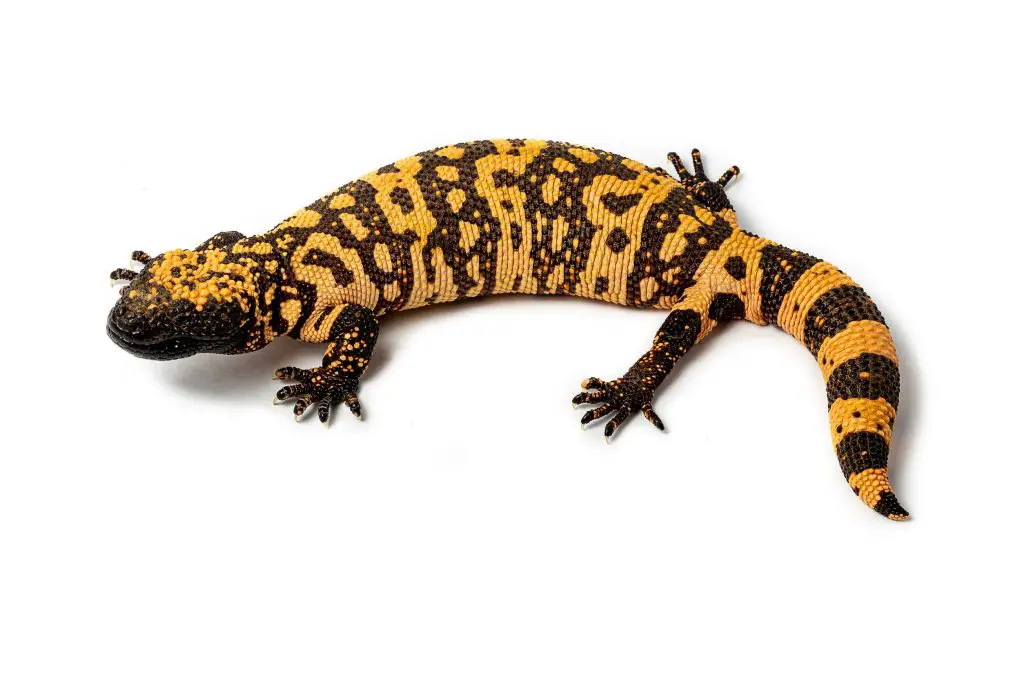Is a Gila Monster a good pet? That depends on whether you’re prepared to jump through the legal hoops to get one, and whether you can accept a little risk…
Last updated on February 1st, 2023 at 09:31 am
Gila Monsters are cared for in a similar way to many other desert reptiles. If you pay attention to their husbandry they become hardy and long-lived, making them great pets. Their drawbacks are the fact that they require permits for ownership in many areas, and that they have a venomous bite.
Gila Monsters as pets
As with most reptiles, Gila Monster care is not as simple as lining a tank with some newspapers. These exotic reptiles are native to Sonoran desert areas from southern Arizona to southern Sonora in Mexico.
Their range may extend slightly beyond these areas, but it always contains desert mountain foothills. This environment provides the perfect substrate for digging burrows or stealing hides from other animals, and a Gila Monster enclosure should do the same.
With much of their time spent in burrows, a captive Gila Monster needs space to display natural behaviors like digging, hiding, and brumation.
Their native environment may seem hot and dry with lows of 45ºF on winter nights and highs of 100ºF on summer days, but these lizards make a point to minimize their exposure to extreme heat & seek out humidity.
For this reason, it is recommended to provide a humid hide or substrate that can hold some humidity which can also help with shedding.
Gila Monsters require both warmth and ambient light to mimic natural behaviors. If they get too cold they may go into brumation more frequently. Likewise, if they don’t have regular 14 hour photoperiods during summer they may attempt to brumate early or stop feeding.
They should also have plenty of room to move around without bumping into tank walls or getting stuck, so prepare for a fairly large enclosure. More on this in the enclosure section of my Gila Monster husbandry guide.
Their exotic nature and rareness in the world of pet reptiles also mean that it may be hard to find proper medical care or husbandry advice.
When this factor is coupled with their specific enclosure needs it becomes apparent that a Gila Monster is not as suited to beginners as a captive-bred Leopard Gecko, for example.
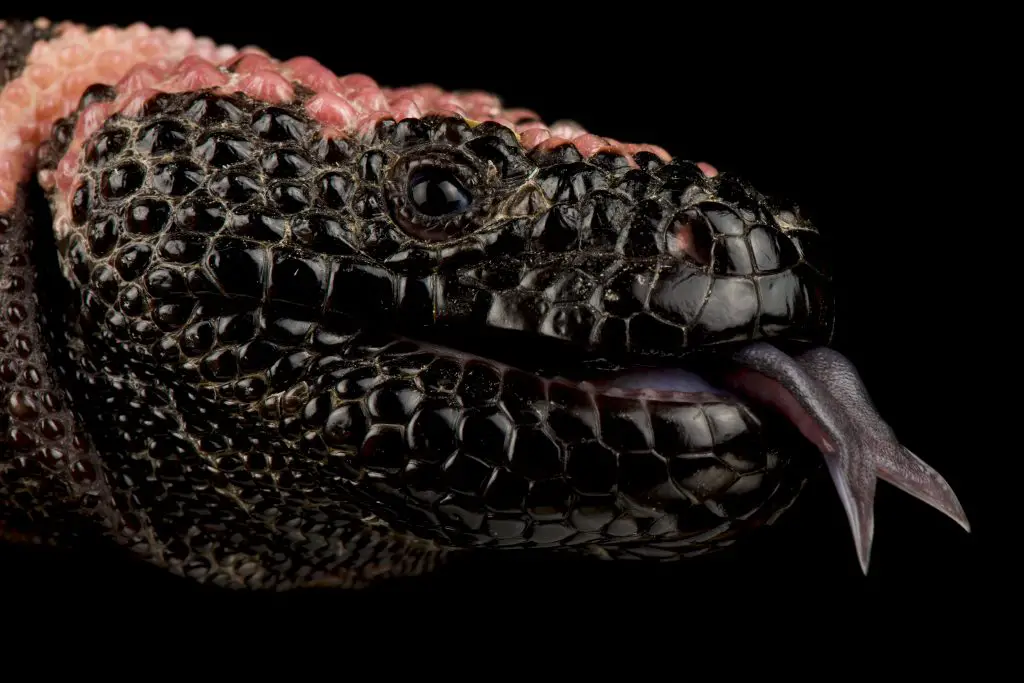
Gila Monster bite
You do not want to be bit by this lizard. Aside from their long sharp teeth and strong bite, Gila Monsters have venom that is secreted from their gums.
As they bite and chew their target this powerful venom makes its way into the wound causing excruciating pain.
There are plenty of myths and legends about this species, but you can be certain that they bite and hold onto a perceived threat with commitment.
So how can this venomous lizard even be kept as a pet? Their venom is not deadly to humans, and the myths about toxic breath are untrue. As of currently, there are no recorded human deaths from Gila Monster venom and they are a rather docile and slow-moving lizard.
Researchers suspect that their venom is primarily used as a defense mechanism. Gila Monsters also display their discomfort and willingness to bite with an open mouth, making most bites predictable and avoidable.
Despite their calm nature, you will still need to maintain caution when interacting with them, because their sharp grooved teeth will do damage and their venom will generate plenty of pain, either of which could require medical assistance.
Note: to learn more about their venom, read the full article on Gila Monster bites.
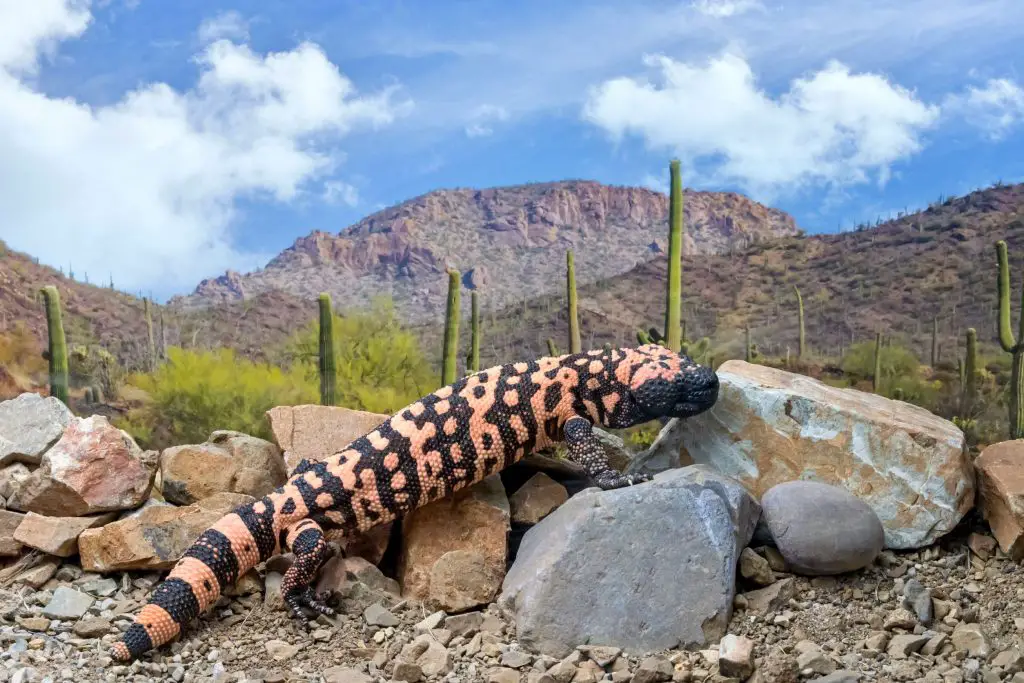
Gila Monster lifespan
With few predators and powerful venom as a defense, Gila Monsters can survive for up to 20 years in the wild. Challenges for survival have increased for this species as domestic animals, like dogs and cats, invade their native habitat and kill them.
They are also sought after for the exotic pet trade. This illegal activity diminishes wild populations and, when coupled with habitat loss, these added pressures generate conservation concerns.
In the hands of an experienced and well-educated reptile keeper, Gila Monsters can live to be over 30 years old in captivity. The oldest Gila Monster on record was 36, so this reptile can be a serious commitment.
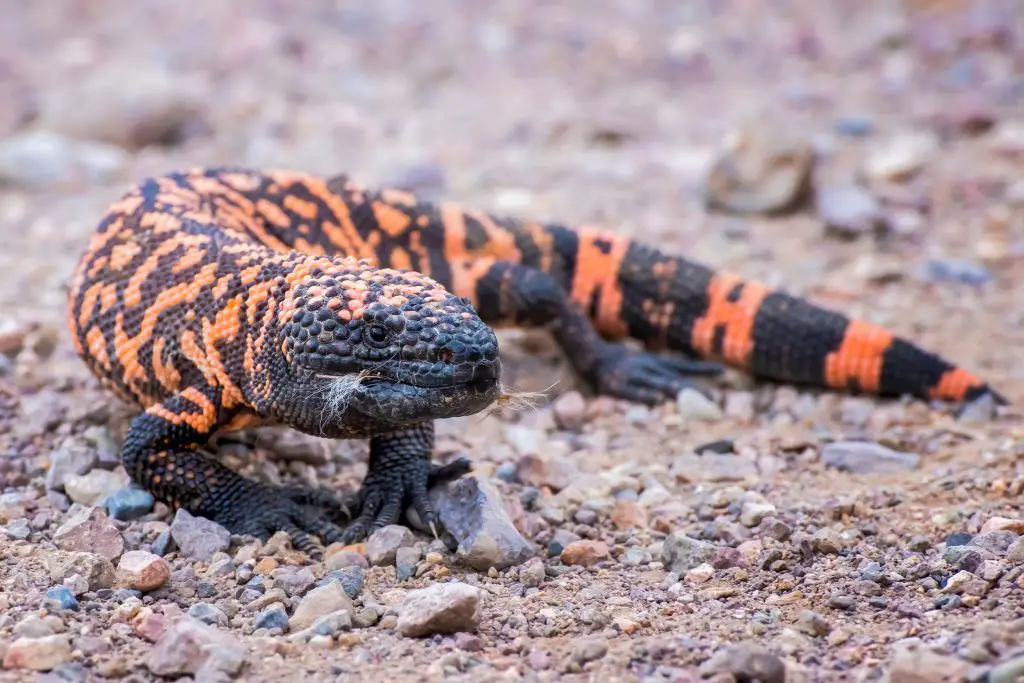
Size And Weight
At 1.5 to 5 pounds and a length of up to 24 inches, these hearty lizards require plenty of room in their enclosures. You will either want to start large or have room to grow their enclosure with plenty of horizontal and vertical space for burrows and hides.
What do Gila Monsters eat?
Gila Monsters can eat almost half their body weight in one meal when they are young and up to 35% as adults. This capacity for consumption contributes to their ability to store fat and survive long periods between meals. So what do these meals consist of?
- Lizards
- Frogs
- Small Mammals
- Eggs
- Insects
- Carrion
- Mice & rats, either frozen or alive
- Ground turkey
- Appropriate dietary supplements
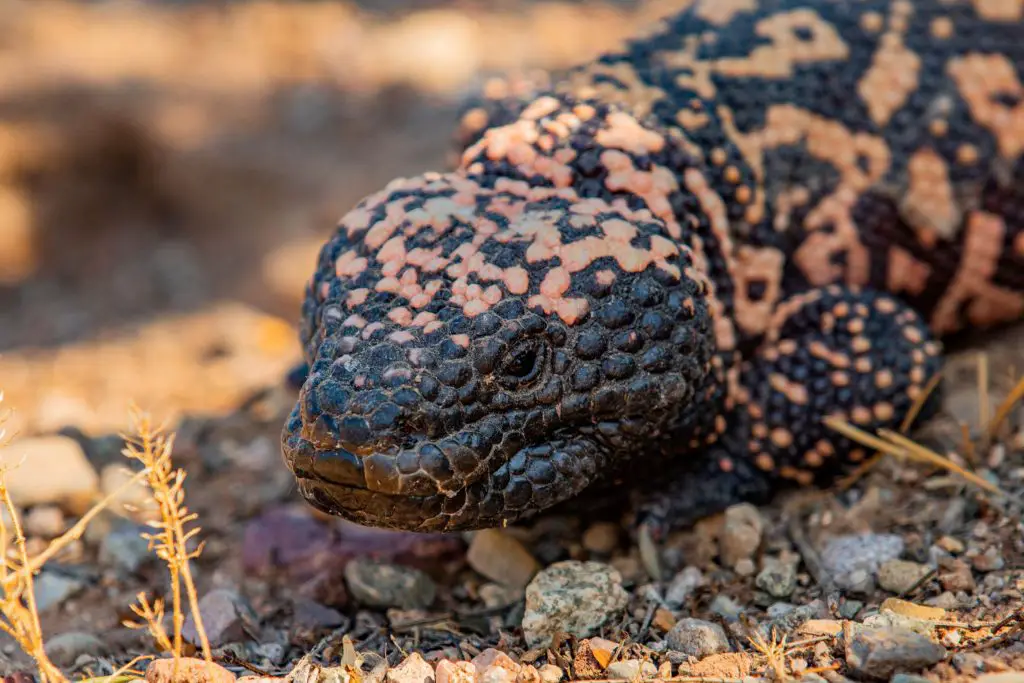
Where can I buy a Gila Monster?
As a Venomous lizard native to specific areas of North America, Gila Monsters are not legally considered to be pets in every U.S state.
Some states have bans on owning “dangerous exotic animals”, the definition of which may vary by state but generally includes venomous reptiles.
It may be possible to legally own a Gila Monster in your state, but a permit or documentation may be required and it is best to look into your local legislation.
If you do find a Gila Monster for sale within your state, ensure that the seller has proper permits, a reliable history of breeding the species, and that their lizards are well cared for. These points help to ensure you aren’t funding the illegal exotic pet trade.
Note that it is harder to own or obtain a Gila Monster in Arizona and other states where they are native since this species is protected due to its native status.
The game and fish departments of each native state should best define laws related to owning or interacting with this species.
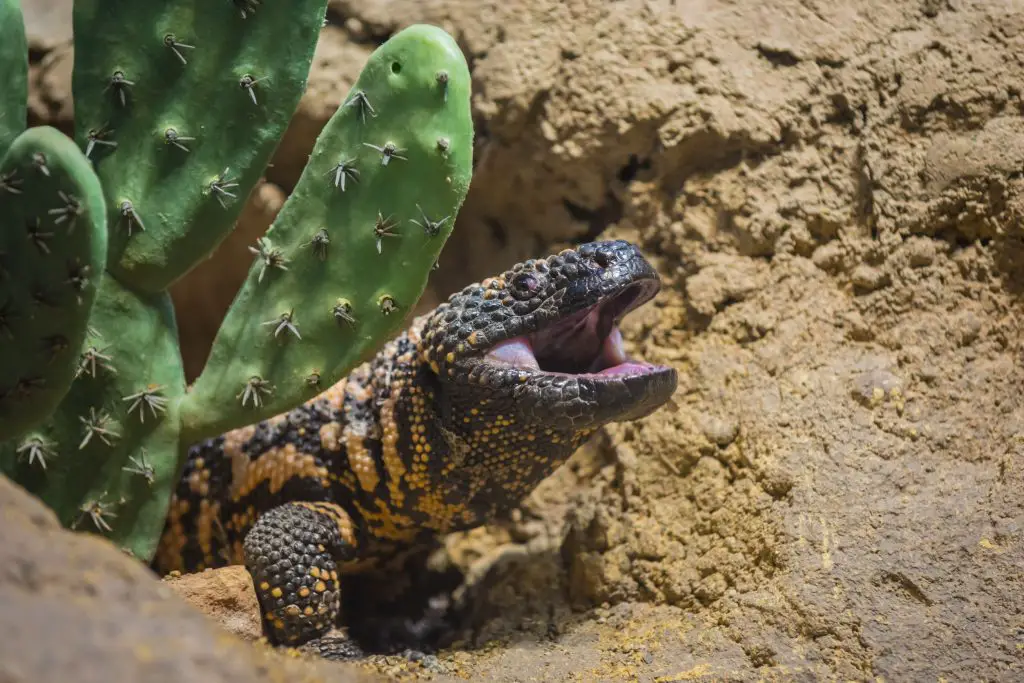
Conclusion
So is a Gila Monster the right reptile for you?
| Pros | Cons |
| Beautiful and unique species | Exotic animal laws, fees, and permits may apply |
| Docile and slow-moving | Capable of inflicting a nasty bite and painful venom |
| Generally a hearty and healthy species | Finding proper medical care can be difficult due to their exotic status |
| A long term pet if well cared for | Requires a large, secure, and well-kept enclosure |
If the cons outweigh the pros then this dessert dweller may not be the best pet for your lifestyle, but don’t fret! There are plenty of other reptiles to consider, many of which are not venomous and require fewer hoops to jump through for legal ownership.

